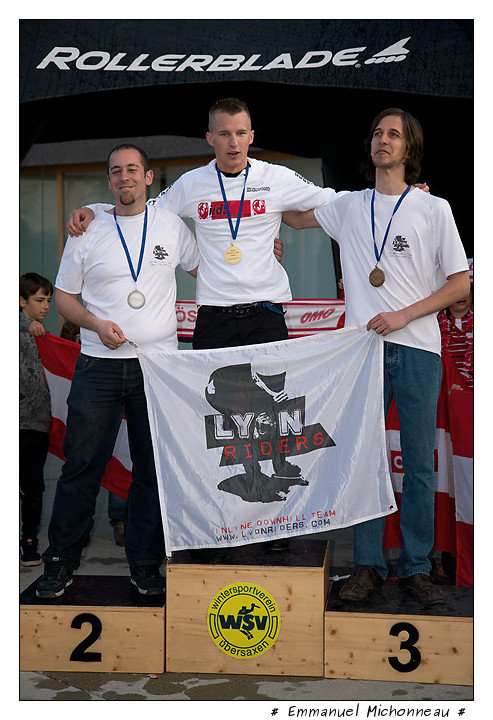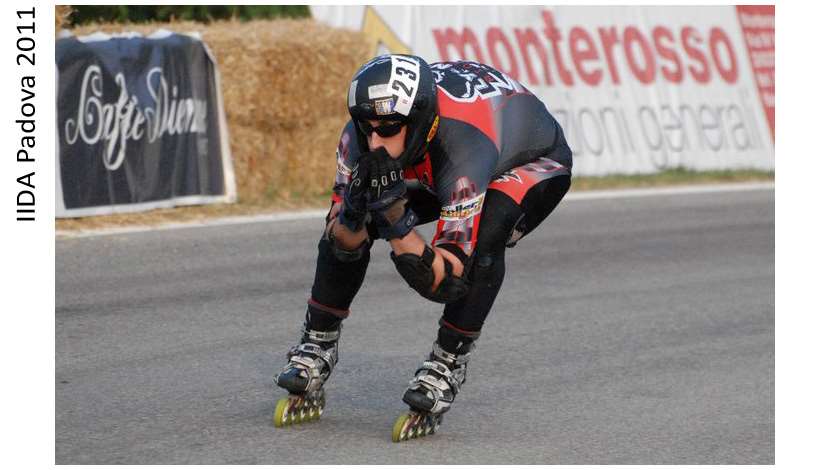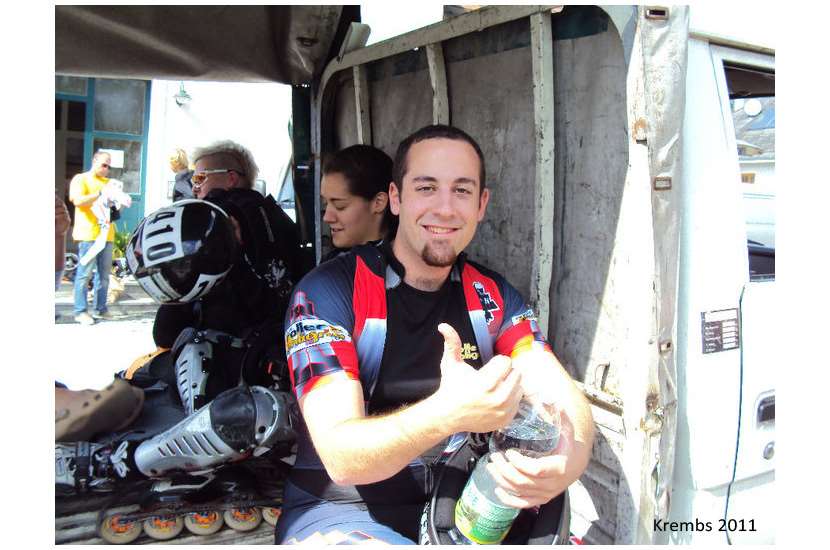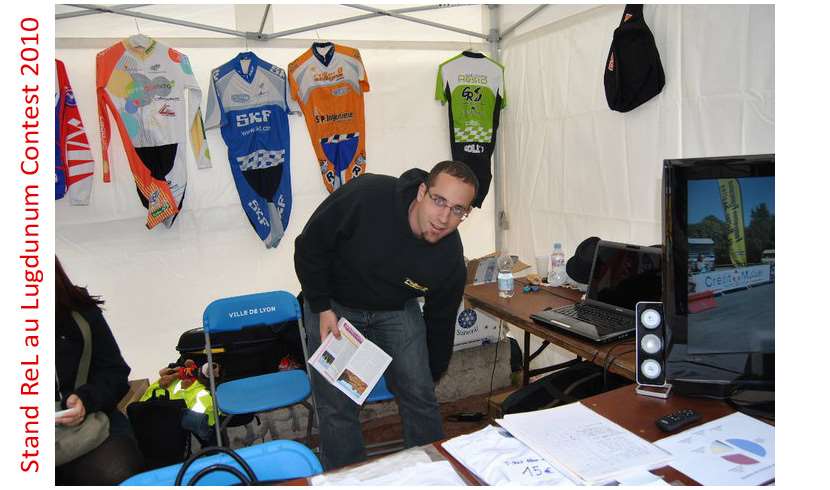Interview with Alexandre Lebrun, the new president of the IIDA
The IIDA (International Inline Downhill Association) is the association governing skating downhill at the international level. After a period of wavering, a new president was elected to restart the machine. Let’s meet French Alexandre Lebrun ...
Par alfathor
Interview …
Hi Alexandre, could you present yourself?
 I’m 24 and I’ve been practicing skating since 2000. I started with slalom skating which was an excellent school for me until 2005. I took part in competitions and managed to get the 2nd place at the French championships in Junior speed slalom in 2005.
I’m 24 and I’ve been practicing skating since 2000. I started with slalom skating which was an excellent school for me until 2005. I took part in competitions and managed to get the 2nd place at the French championships in Junior speed slalom in 2005.
After a lesion of the meniscus and a drop of motivation in this discipline, I started downhill in early 2006 thanks to the dynamics of the skaters from Lyon and through the brand-new association Lyon Riders. As for competitions, I take part in as many events as possible: I’ve been in the world’s Top-3 at the general ranking since 2008 and French champion since 2009. I entered the board of Lyon Riders in 2007 as treasurer, and today with my president and friend Guillaume Gansert, we’ve managed to reach 51 members in the association in the end of 2011. I’ve also been part of the IIDA as the French representative since 2009.
I’m the skate representative at the heart of the downhill section of the skateboard commission at the FFRS (French Federation of Roller Sports) and I write articles on OLS when I’ve got the time (that’s a good resolution to keep and go deeper into for 2012).
Then, I try to cope with both sports and associative activities in order to get involved as much as I can in the discipline.
What is the function of the IIDA?
The role of the IIDA is to supervise the organization of the World Cup and the World Championships. We are recognized by the FIRS only for the organization of the World Championships of Inline Downhill, which awards each year the uncontested title of FIRS World Champion of Downhill.
All through the season, we manage the establishment of the general ranking for the World Cup, which designates the winner of the World Cup. The discipline is organized through rules particularly based on safety and sports ethics.
It’s more about supervising the discipline without real intervention into the organization of the events for which the organizers remain responsible for.
What motivated you to take over the presidency of the IIDA?
The control of the IIDA organization group. We were only communication through e-mails: exchanges were hardly readable and votes hardly existent. For example, in 2009 I proposed to change our points system which I considered unfair, in illustrating my demonstration with scenario and various point systems: Indeed, a skater ending up four times 25th was better ranked than another having ended up three times 1st, because of a point system being 1st = 100 pts / 2nd = 99 pts / … The change could only be taken into consideration at the end of 2010 and implemented for the 2011 season!
The physically organized meetings during events wouldn’t lead to decisions, not even to meeting feedbacks. In establishing participation figures on the IIDA events, I also realized that the participation rate was strikingly decreasing in 2011. It is true that the economic context and the price of the events can partly explain the problem, but according to me our inactivity was also responsible for it. I was afraid that our discipline would be consigned to oblivion if we didn’t react now.
Then I applied for the presidency, with file and short/long term objectives, and I was elected by the committee.

What is the actual state of the IIDA? What are the resources available?
About the resources, we’ve got a committee gathering 9 representatives from the main countries of the discipline, a rulebook the last update of which dates from 2009, a bit of elbow grease and that’s about all! We’re almost starting from scratch. The association has no legal identity and no bank account, which is unbelievable. It is a prerequisite for all the rest, to establish files, find sponsors, and raise funds on an account. As for human resources, the 9 current representatives are more or less active (just like in any voluntary organization) according to their family lives, their involvement into the discipline, and even their affinities with computers! The association needs to be thoroughly reviewed!
How is Downhill on the international scale?
Downhill is mainly practiced in Europe where the number of events is bigger and concentrated. The strong nations are France, Austria, Italy and Germany. Behind, there are numerous countries but with only a few participants. However, there is a real dynamic about the discipline on the social networks and youtube, enabling to spread its image and make lots of skaters dream.
This is how you discover that the discipline is practiced in unsuspected countries like Senegal, Peru, Argentina or South Korea. There’s some work to do on census reporting and mapping of the discipline in the world to open development ways.
A country like England was absent from the discipline so far. With the arrival of Grant Du Plessis (a South African skater who took part in downhill events during the 2000s) and thanks to his motivation, he managed to create an association (the IDUK), run introduction workshops, make a website (http://www.inlinedownhill.co.uk), and he brought a real dynamic! I hope that such initiatives will emerge in other countries.

How does the IIDA works on a financial level?
We raise funds (€150) from each event organizer who wishes to host an IIDA competition. On the other hand we have expenses linked to medals, the website, etc. The rest is extremely limited and fragile. Let’s say that we have no financial resources for the moment.
What are your projects for the IIDA?
Creating an official structure and a bank account are part of the priorities. Then, reviewing what already exists (the role of each person, updating the rules) and professionalizing (creating sponsoring files and solicit sponsors, implementing organization packs, etc.) It’s a long and winding road and I’m aware that the job is tough, but I like challenges and hopefully I have more supporters than detractors.

Do you have something to add as a conclusion?
I’d like to insist on one point. Indeed the discipline is “extreme” and the speeds reached by the best skaters can go up to three numbers in more than 12% gradients downhills… But it only concerns the cream of the discipline!
 I think that lots of people don’t go further this first common belief before thinking whether they would be able to practice the discipline! Indeed some prerequisites are needed: a certain number of protections and a minimum level in skating (especially plow stop and T-stop). But apart from that, there are newcomers each year who are there to practice for fun on promotional events with a small gradient and a few bends in order to discover the discipline safely.
I think that lots of people don’t go further this first common belief before thinking whether they would be able to practice the discipline! Indeed some prerequisites are needed: a certain number of protections and a minimum level in skating (especially plow stop and T-stop). But apart from that, there are newcomers each year who are there to practice for fun on promotional events with a small gradient and a few bends in order to discover the discipline safely.
Last but not least, downhill is an excellent school and teaches you the art of lines and self-control. Qualities that can prove to be a strategic advantage in speed to make a breakaway just before a hairpin bend for example (the Gambas brothers used this technique more than once!)
See you soon on a downhill!
Useful links
Website of the IIDA
Facebook page of the IIDA
By Alfathor
Translated by Close Yr E’s
Photos: Emmanuel Michonneau,
Adlkofen Sharks, Dragos Manescu
